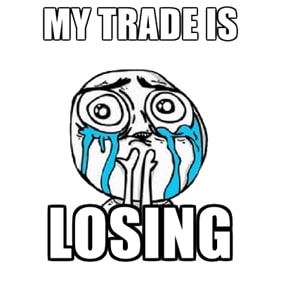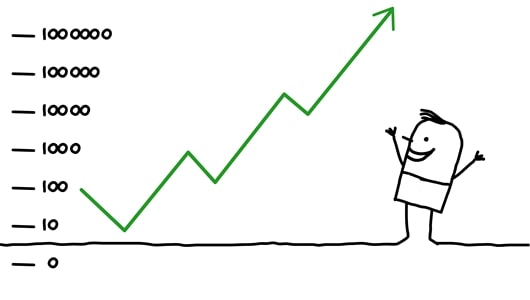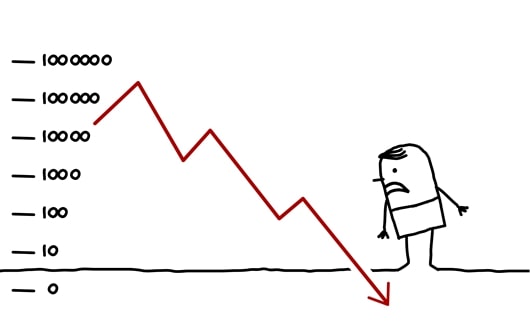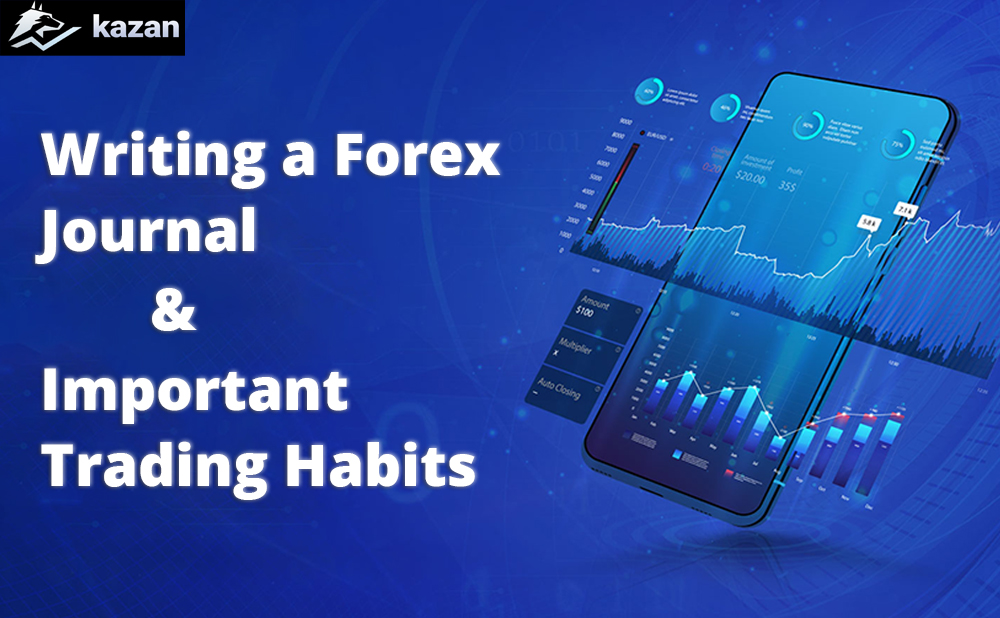In this article, you will learn about developing, establishing, and maintaining a Forex trading plan, system, and journal. Keeping a journal is not limited to idealistic high school girls, believe us. Even the most discerning traders today maintain Forex journals!
Why do you need a Forex journal?
Developing a habit of keeping a Forex journal is crucial.

Maintaining a Forex journal is a significant endeavor as it aids in measuring, monitoring, and enhancing trading efficiency. Elite athletes keep journals to track their training and competition progress. Scientists maintain journals to document their research process.
The objective here is to transform simple elements into discipline and consistency, ultimately resulting in profitability. A disciplined trader is a profitable trader, and keeping a Forex journal is a part of that discipline. Though it may sound straightforward or easy, we assure you that it is far from simple to implement.
In reality, many forex traders give up after a while and rely on readily available Forex journals provided by forex brokers. While these Forex journals or trade histories from brokers offer comprehensive and valuable information, they do not provide insights into the reasons WHY trades were entered and exited.
The information they provide does NOT contribute to your future trades. A Forex journal goes beyond merely documenting entry and exit prices; it also encompasses trade execution timings. Additionally, a Forex journal addresses system adjustments and psychological aspects. More specifically, it delves into the personal emotional psychology before, during, and after trades.
For instance, let’s say you purchase USD/JPY. However, you have a gut feeling that this trade will NOT go well. Despite that, you remind yourself, “I don’t believe this trade will be successful. BUT I must adhere to my trading plan, so I will execute it.”
While the trade is ongoing, the price approaches the stop-loss level of 3 pips, and you think, “This trade doesn’t appear favorable. I knew it! Why didn’t I trust my instincts? I am such a fool! I am about to lose money! I should exit immediately.”

Subsequently, you decide to close the trade. Shortly after, the price reaches the initial profit target you had set. If you had held onto the position, you would have made a profit!

This exemplifies why you should maintain a Forex journal. This is a classic scenario that can occur to numerous traders. Failure in trading, failure in trading with a plan, and most significantly, failure due to emotional involvement in trading!
If you persist without cultivating the habit of keeping a Forex journal, the balance in your account will dwindle to zero before you realize what mistakes you have made.
The Benefits of Maintaining a Forex Journal
Most professional traders consistently maintain a Forex journal to review their trades in a consistent manner. The personal advantages of keeping a Forex journal include:
- Self-Discovery and Anticipation of Situations: By documenting trades, traders can identify their own patterns and anticipate potential situations they may encounter in the future. This process helps traders gain a better understanding of themselves.
- Tracking Progress towards Trading Goals: A Forex journal aids in tracking progress towards the goals set in a trading plan. Traders can monitor whether they are on track or need to make adjustments to achieve their targets.
- Identifying Strengths and Weaknesses in Execution and Handling Pressure: By writing a Forex journal, traders can clearly identify their strengths and weaknesses in executing trades and handling pressure. It provides an objective source of information for self-training and improvement.
- Objective Information for Self-Education and Improvement: A well-maintained and detailed Forex journal serves as a valuable resource for self-education and improvement. Traders can learn from past experiences and gain insights into their trading performance.
Not everyone has a Master’s or Ph.D. in mathematics, computer science, financial engineering, or any other field, and then transitions into a large financial institution or an exclusive trading company. We are all self-taught learners here, studying at home or anywhere with internet access. This means we learn EVERYTHING from scratch and develop unique methodologies.
Fortunately, with forums and the internet, we can learn and connect with like-minded individuals, both beginners and experienced, to shorten the learning curve. However, many traders lack a safe approach when participating in the financial markets without a mentor or advisor.
Having a mentor or advisor present to guide traders step-by-step, point out mistakes, recognize strengths, and keep them disciplined and accountable for their performance is not always feasible. Therefore, an alternative approach is suggested: self-coaching through maintaining a Forex journal.
A well-documented and detailed Forex journal can replace a mentor and help traders learn from past experiences. Although the habit of journaling Forex may seem tedious and time-consuming, traders learn much more from reviewing their own trades than from reading a book or attending a seminar.
Over time, the Forex journal will evolve alongside traders. If they keep track of everything related to their trades (including psychological issues, market environments, system adjustments, etc.), it will help them identify important lessons such as:
- Which news events to avoid?
- How much risk should be taken per trade?
- When to enter a trade and when to stay on the sidelines?
Furthermore, the level of discipline maintained with the Forex journal will be a great predictor of overall success.

5 Essential Elements for Keeping a Forex Journal
Simplify everything! Record your thoughts and actions before, during, and after trades. Trading is a probabilistic skill, irrespective of trading style or methodology.
Results are determined by market analysis, planning skills, and the effectiveness of trading methods, along with a bit of luck. Success in trading is influenced by numerous variables, which is why it is important to document everything to identify both strengths and weaknesses.
What to include in a Forex trading journal:
- Who you are and your motivation: Understanding your own identity, considering your lifestyle, and knowing why you engage in trading are crucial to finding a suitable trading approach.
- Market perspective and philosophy: This encompasses your understanding of the market and how you make trading decisions, as well as your risk management approach for your trading account.
- Market observations: While each trading day presents unique market dynamics, it doesn’t mean you cannot grasp the underlying trends. With careful and consistent observation, you can identify these trends and adjust your strategies accordingly.
- Trading mistakes and missed opportunities: Documenting your mistakes and missed opportunities is vital. Closing trades prematurely, incorrect order execution as per your system, entering incorrect positions or sizes, and other errors should be recorded in your Forex trading journal to avoid repeating them in the future.
- Performance statistics: Many aspects of trading performance can be quantified into data. This provides you with a realistic perspective, as numbers do not lie. Sometimes, a reality check can help you regain motivation.
It is important to note that these elements should be included in a trading plan. The minimum 5 things you must include in your Forex trading journal are:
- Potential trading zones
- Entry points
- Trade volume
- Money management rules
- Trade observations
This is your Forex trading journal. Similar to customizing a Dota 2 character, you should customize your Forex trading journal to suit your needs. Remember, you are the one who will benefit from maintaining a Forex trading journal, so write down what you believe will be beneficial.
Potential Trading Area
You need to have a valid rationale for every trade, also known as trading logic. You are not superstitious. You are not a gambler, right? Why are you considering this area to enter a trade? Are you looking for an opportunity to initiate a position?

This area can be identified by any method you have established in your Trading Plan. It could be the intersection of two moving averages or a price resistance level above the Fibonacci retracement level. The potential trading area represents the price range where you can enter a trade.
We strongly recommend taking a screenshot of the chart when you identify this area. Try to develop a habit of capturing chart screenshots. When evaluating future trades, visualizing what happened will help train your eyes to observe potential opportunities or traps on real-time charts. This will assist you in remembering why you entered a trade or realizing any overlooked aspects.
The potential trading area is where you believe there will be a trading advantage with a high probability of success and a favorable risk/reward ratio. You have to determine these requirements for yourself. When you sit in front of the screen, you are ready to trade. The potential trading area is your target. This will prevent you from entering a trade without a plan.
How to Enter a Trade?

Entry points indicate when it’s time to take action. Entry points inform you when it is appropriate to actually engage in trading within the potential trading area.
This is a specific technique for entering trades. Now that you have decided where to enter a trade, you need to determine how to enter the trade. Are you blindly entering a trade? Like crossing the road with your eyes closed?
Of course, first, you look both ways to ensure safety. The same approach applies to trading. You need to make sure it is safe to enter the market (a high-probability trading setup).
The entry technique will help you avoid trades that don’t unfold as expected within the potential trading area.
Let’s say the potential trading area exhibits a bearish divergence. Do you automatically sell? Or will you wait for the price to approach the resistance level first? Perhaps you might even wait for an additional candlestick reversal pattern, such as a shooting star? Instead of waiting for these factors, you sell immediately, only to see the price rise and reach your stop-loss level.
Finding a good trading area does not mean you should immediately jump in. A solid entry technique provides the strongest confirmation with the highest probability to help you avoid failure. Once again, develop the habit of taking chart screenshots and making notes of your entry points.
Remember, you must combine a good entry point with a good potential trading area. A crossover of two moving averages is a popular entry technique, but if you don’t include other confirming indicators, you may fail in this trade due to impatience. Relying solely on an entry technique with one confirmation factor is a recipe for disaster.
Ensure that you have market knowledge and the patience to wait for the convergence of sufficient conditions for a safer approach. Don’t bring a knife to a gunfight.
The Significance of Trading Volume
The importance of trading volume lies in its ability to facilitate effective risk management within a trading plan. By adhering to risk management principles, traders can determine the appropriate trading volume, thereby maximizing risk control.

How much are you willing to risk per trade?
1%?
2%?
5%?
10%?!
20%? !!!!
Or perhaps you would even wager your home documents?!!!!! Avoid staking your home documents! As a trader, your goal should be to avoid gambling and instead focus on becoming a disciplined trader. Trading volume plays a critical role in maintaining a healthy trading account and positioning it for future opportunities. It is important to consider whether you prefer trading with large or small volumes. By monitoring trading volume in your Forex journal, you can comfortably engage in trades with substantial volumes or opt for smaller volumes and utilize wider stop-loss points.
Trading Management Principles
Before considering entering a trade, it is essential to have a well-defined trading plan in place. This trading plan will enable you to effectively manage your trades, whether they result in profits or losses. While initiating trades may seem straightforward, it is during the stop-loss phase that money is potentially lost.
Emulate Tom’s Approach
Consider the contrasting outcomes of two traders, Tom and Jerry, who engage in trading.

Tom earns profits from his trades because he adheres to proper trade management and develops exit strategies for various scenarios. Even in situations where he incurs losses, he knows when to accept minor losses and cut them off.
On the other hand, Jerry lacks a plan for handling trades. He is uncertain about his course of action if prices move against him, ultimately leading to a complete loss of his trading account.
The key is to establish a robust trade management approach PRIOR to entering a trade. Avoid making critical decisions while caught up in the heat of the moment during an ongoing trade. When you decide to enter a trade, you should have already determined how you will respond to all possible outcomes.
Prior to entering a trade, carefully evaluate all potential outcomes. All decisions should be made BEFORE executing the trade. You are in control. When you contemplate entering a trade, simply refer to the predetermined plan you have established beforehand. This approach helps eliminate negative psychological factors that may cloud your judgment.
Once you execute a trade, you should already know the initial placement of the stop-loss, the profit target, whether a trailing stop is appropriate, potential early exit points, and more. A well-planned trade management strategy must be in place PRIOR to initiating any trades.
Avoid contemplating what actions to take during live trading. Decisions regarding trade management should always be made PRIOR to executing the trade.
Learn more: VPS EA and 4 Things You Need to Know About This Virtual Machine
Reviewing the Trading Process
It is essential to reflect on the trading process. After completing a trade, it is important to review the executed transactions, regardless of whether they resulted in a win or a loss. This serves as a self-evaluation process. Here are some questions for self-assessment:

How well did your trade perform?
- Did the trading volume align with risk management and profit rules?
- Could you have entered the trade at a more favorable price?
- Which tools did you utilize to improve the timing of your entry?
- Were you patient or hasty in executing the trade?
- Was the profit realized or merely an imaginary gain?
- How did the trade reach the take-profit level, such as hitting the target or exceeding the price?
- How was the stop-loss order handled, such as being triggered or not?
- Which news or events influenced the market movement?
Use the answers to adjust the trade volume, entry points, and exit strategies.
Effective Trade Management
Can you effectively monitor the market while actively trading? If so, how do you accomplish this? If not, what are the reasons? The responses to these questions will reveal how much time and dedication you can allocate to trading.
- Did you make adjustments to your plan while the trade was ongoing?
- Did you modify the stop-loss level to safeguard your profits?
- Did you secure a portion of the profits?
- Did you close the trade based on the trading plan or out of undisciplined decisions?
Based on the answers, you will identify any negative emotions influencing your trades. While you may wish to confide in close friends about your thoughts, emotions, and feelings, it is better to document them (in a Forex journal). What can you improve, and what specific steps will you take?
This is an opportunity for self-improvement. Avoid writing vague confessions like “I need to sustain this winning streak for a longer period.” Instead, identify SPECIFIC steps you will take to enhance your trading. How will you extend a longer winning streak?
Will you put in the effort to set better profit targets? Will you learn how to manage your emotions when a trade moves against your initial expectations? There are no right or wrong answers in this evaluation process.
Just be honest with yourself. And it must be SPECIFIC and CLEAR. Otherwise, you won’t be able to improve your trading abilities. Have you been following the trading plan? DON’T UNDERESTIMATE THIS QUESTION!
If you haven’t been consistently adhering to the plan, you may face a serious issue with discipline or have problems with the trading plan itself. Regardless, there is always a SIGNIFICANT problem that needs to be addressed starting from yesterday!
Trading Performance Statistics
Analyzing the performance of trades is crucial for evaluating overall trading effectiveness. Utilizing statistical data provides valuable insights into what is working, what needs improvement, and what should be avoided. Here are several statistics to monitor and assess trading performance.
- Net Profit
Net profit is the total earnings minus losses and transaction costs. It encompasses commissions and other associated fees. Essentially, net profit reflects the overall increase or decrease in an account balance after accounting for trading expenses. - Winning Percentage (%)
The winning percentage is calculated by dividing the total number of successful trades by the total number of trades executed. - Losing Percentage (%)
The losing percentage represents the proportion of trades that resulted in losses, calculated by dividing the total number of losing trades by the total number of trades. - Largest Winning Trade
Excluding the largest winning trade from the average win calculation provides a more accurate representation of the trading system’s performance. While not mandatory, this approach accounts for any exceptional gains that may skew the average. - Largest Losing Trade
Similarly, excluding the largest losing trade from the average loss calculation offers a clearer understanding of the overall trading process. It eliminates any disproportionate losses that might distort the average loss. - Average Win per Trade
The average win per trade is determined by dividing the total earnings from all winning trades by the number of winning trades. - Average Loss per Trade
The average loss per trade is calculated by dividing the total loss from all losing trades by the number of losing trades. - Return per Trade Ratio
The return per trade ratio is derived by subtracting the average loss per trade from the average win per trade. It provides a measure of the overall profitability of the trading strategy. - Average Duration per Trade
The average duration per trade is obtained by dividing the total time spent holding positions for all trades. - P/L (Profit/Loss) of Buy Trades vs. P/L of Sell Trades
This indicator helps identify the performance disparity between buy and sell trades or different trading conditions. - Maximum Consecutive Losses
Monitoring the maximum consecutive losses helps anticipate the worst-case scenario or the highest drawdown experienced thus far. - Average Consecutive Losses
The average consecutive losses highlight the typical drawdown and offer insights into potential risk management strategies. - Longest Losing Streak
The longest losing streak represents the peak period of unfavorable performance within the trading system. - Expectancy of Trades
Expectancy refers to the average amount that can be expected to be gained or lost per trade. It is calculated by subtracting the product of losing percentage and average loss from the product of winning percentage and average win. This indicator assists in determining position sizing and assessing the profitability of the trading approach.
Monitoring Trading Psychology
While trading psychology cannot be quantified through statistics, it is essential to record it in your Forex journal. Monitoring your mental state helps avoid trading during emotionally charged times, such as immediately after a news event that significantly impacted the market. Recognizing one’s emotional state is crucial to making rational trading decisions.

It is advisable to track these statistics to compare and analyze performance over a specific period of time. For instance, towards the end of the year, you can examine the data to evaluate your trading throughout the year. Upon reviewing your trades through the Forex diary, you realize that you inadvertently entered trades against the prevailing trend!
Armed with this knowledge, you can make adjustments to avoid counter-trend trades, thereby hoping to enhance trading effectiveness. The objective of collecting and calculating these statistical figures is to maximize expectations (in terms of pips or USD gained per trade), determine precise trade sizes, and identify the most suitable trading conditions for YOURSELF!
Reviewing the Forex Diary
After a series of successful trades, you will accumulate a wealth of market and personal data. So, how do you analyze it all? The process is quite straightforward:
- Identify the strategies or actions that yield positive results and continue implementing them.
- Recognize what should not be done and cease those activities.
Filter the analysis of your trades by categorizing them into smaller sections, such as by the day of the week or specific currency pairs.

Here is a template of the types of questions you should ask yourself when reviewing the Forex diary:
- Which types of charts or technical indicators suit you best? And which ones do not?
- How can you adjust the indicators to help you enter trades earlier or avoid false breakouts?
- Are you closing winning trades prematurely? Is it because you take profits at that point or due to the fear of price reversal?
- Do you hold losing trades for an extended period or cut them off promptly? How can you improve your stop-loss placement process?
- Do you consistently adhere to your trading plan, and have you been profitable?
- Which entry points did you miss or opt not to take, and why? Were they valid signals according to your system?
- What can you do to minimize losses or maximize profits?
- Do you achieve more success with higher trade frequency or focusing on one trade at a time?
- Which market conditions suit you? Is the market trending or moving sideways?
- Do most of your wins or losses occur on specific currency pairs?
- Which news events cause significant market volatility that you can capitalize on or avoid?
- Which trading sessions are most favorable for your trading style?
- Which days of the week result in more losses, such as Mondays or Fridays?
Asking questions like these will help you quickly identify negative behaviors. Once you have identified the correct actions, the next step is to consistently implement them until they become habits. Ultimately, maintaining a consistent Forex diary will enable you to achieve optimal efficiency and recognize when the market undergoes changes.
Maintaining the habit of writing a Forex diary is challenging but highly worthwhile.
Experiencing losses while still adhering to the trading plan is better than losing everything. Take a moment to reminisce about your triumphs while enjoying Netflix.

And how do you choose your approach?
In the Forex journal, it is necessary to evaluate trades rather than relying solely on memory. This task proves to be challenging for most individuals. Moreover, maintaining a Forex journal allows traders to step back and assess trades as a cohesive group, rather than isolated random transactions.
One might perceive this as a labor-intensive endeavor, wouldn’t they? However, nothing worthwhile is easily accomplished. Keeping a Forex journal is akin to the training regimen of athletes. For instance, a soccer player dedicates six days to training on the field for a mere 90 minutes of gameplay on the weekend.
According to Tim Grover, Michael Jordan’s physical trainer: Michael would score 40 or 50 points in a single night, and the next morning, he would return to training with great intensity. He wouldn’t allow himself a day off. His mental fortitude was beyond belief, but the reason behind it was his daily physical readiness. He once stated, “I practice so hard to make the game easy for me.”
John Wooden, the legendary basketball coach who achieved 10 records in the NCAA Men’s Basketball Championship, followed a rigorous and disciplined two-hour practice routine, five days a week, to prepare for a 40-minute basketball game.
They would spend 10 hours (or 600 minutes) training for a mere 40 minutes of actual gameplay.

And that’s not all! Athletes not only train diligently but also maintain the habit of journaling their training sessions. Coach Wooden would frequently refer to his training journal if the team encountered any issues that he couldn’t resolve.
For example, if the team underperformed, he would examine past training journals to identify ways to enhance their performance. Even in an era without computers or iPads, Wooden recognized the significance of keeping records!
Although maintaining a Forex journal may not be particularly challenging, it is a time-consuming process that demands consistent effort.
Forex Journal Recap
A Forex journal serves as a comprehensive record of all trading activities. It aids traders in objectively assessing their performance. There are three key elements for achieving sustainable trading success:
- Having and adhering to a rigorous trading PLAN.
- Implementing a sound trading SYSTEM and consistently following it.
- Evaluating and enhancing performance as well as trading strategies.

It is crucial for every trader to maintain the habit of keeping a focused Forex journal emphasizing these elements. The objective is to monitor both the effectiveness of the trading system and the consistency in its execution. Poor trading performance often stems from traders failing to adhere to their trading system’s rules.
Maintaining a Forex journal ensures adherence to the trading system. This requires continuous effort on a daily, monthly, and yearly basis.

Be meticulous and honest. Learning how to write and maintain a Forex journal cultivates discipline. Furthermore, when reviewing trade entries after a month of trading, it is guaranteed that valuable insights about oneself and the psychology of trading will be gained.
Strengths and weaknesses become evident, offering the best opportunity for self-understanding. This is something that no advisor, book, video, or seminar can teach. It must be experienced personally. Only through this experiential learning can one become a successful trader.
To develop trading skills, one must possess the determination to consistently maintain the practice of writing a Forex journal.

Here are some final tips before concluding the lesson:
- Always begin writing the Forex journal before and after each trade.
- Document everything. Do not omit any details. Be honest. If a trade is missed due to watching the latest episode of Game of Thrones or playing Call of Duty, write it down and provide an explanation.
- Pay close attention to emotions. Ensure that they are recorded in the journal.
- Make sure the Forex journal encompasses self-observations, trade-related insights, and observations about the
- Forex market. It has been observed that Forex journals often lean towards analytical aspects while neglecting market observations.
- Capture screen images of price action charts on a daily basis and provide commentary. Take note of any price patterns being observed.
- After a few months, patterns will start to emerge in real-time.
- The Forex journal serves as a valuable learning tool and an excellent mechanism for honing the ability to identify trade entries.
- No detail is insignificant when it comes to recording all events in the Forex journal. Whether a trade was missed due to watching the latest episode of Game of Thrones or playing Call of Duty, it should be noted down.
